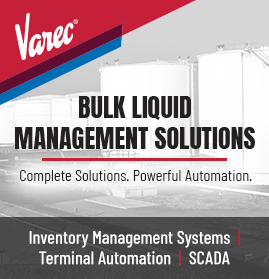Gibson Energy is to divest several of its non-core businesses in order to accelerate its transition to a company more focused on oil infrastructure growth.
The key attributes of its strategy includes bringing its infrastructure portfolio to comprise 85% of segment profit by the end of 2019, with the Hardisty and Edmonton terminals representing approximately 75% of segment profit. The company also aims to invest $150m – $200m in growth capital per year, inclusive of the expected sanction of at least one to two tanks per year that provides mid- to upper-single digit distributable cash flow per share growth. Additionally, the company intends on having a secure, growing dividend, underpinned by long-term contracts with Investment Grade counterparties at its terminal assets.
President and Chief Executive Officer, Steve Spaulding, emphasised the importance of the planned divestment on company cash flow: “Accelerating the shift towards an oil infrastructure focus meaningfully improves the quality of our cash flows and better positions Gibson to target double-digit distributable cash flow per share growth.” Adding that the company is confident in reaching its targets in 2019 based on the projects it already has under construction, coupled with anticipated cost savings.
“Longer term, to secure the capital investment opportunities we require to drive our growth, we need to be focused on the business lines and basins in which we have the strongest competitive positions.”
Gibson Energy’s Canadian business strategy expects that the long-term growth of oil sands production will continue to increase heavy oil flows into Hardisty, driving producer demand for additional tankage. Gibson has a very strong competitive position at Hardisty and expects that the company will continue to secure a significant proportion of incremental third-party tank build opportunities.
The company will also continue to grow its businesses that leverage the core terminal position. Ancillary services within the terminals are expected to continue to generate smaller-scale investment opportunities, including additional pipeline connections, blending and other optimisations on behalf of terminal customers. Gibson also seeks to expand its pipeline gathering network surrounding Hardisty in the Viking Basin by leveraging existing storage capabilities and access to egress pipelines at its terminals.
Gibson’s US strategy will focus on the Permian and SCOOP / STACK basins and leverage its injection station position in these plays as a competitive advantage to build gathering systems relative to other regional players.
Gibson Energy is not alone in its strategy. DKGP Energy Terminals is also focusing on its storage terminal portfolio, following its recent announcement to acquire two refined products terminals from an affiliate of midstream infrastructure provider American Midstream Partners. The $1.38bn acquisition will see the company become the new owners of two terminals. One of the terminals is located in Caddo Mills, Texas, while the other is located in North Little Rock, Arkansas.
The deal is expected to be completed by the end of first half of 2018. DKGP Energy is a joint venture of Delek Logistics Partners and Green Plains Partners.
Royal Vopak has also announced the expansion of its storage capacity by 100,000 cubic metres for the storage of gasoline and biofuels of the PT Jakarta Tank Terminal (JTT), a joint venture company in Indonesia between Royal Vopak and PT AKR Corporindo Tbk (AKR). The expansion will take the total tank capacity of JTT to more than 350,000 cubic metres.
For more information, visit: www.gibsonenergy.com and www.vopak.com
2nd Mar 2018









